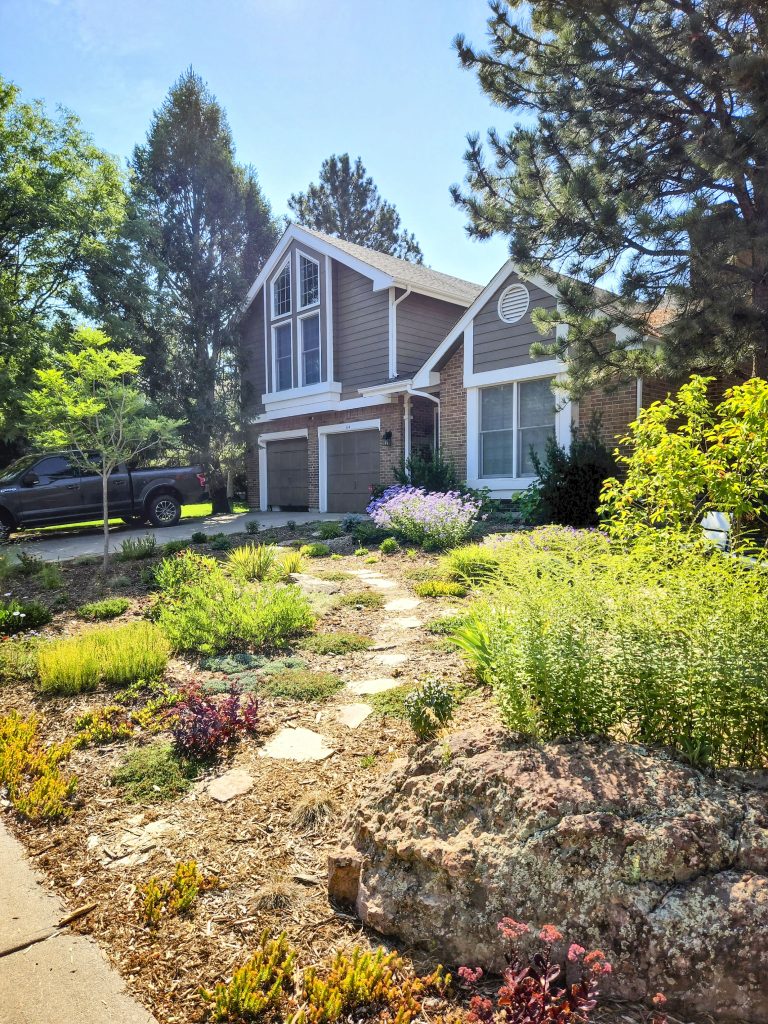Colorado living: Xeriscape is one way to garden

In 2022, just two years after it was planted, Leigh and Eric Houston’s front yard was already displaying the beauty of xeriscape. See The Connection’s article from August 2020: “Goodbye lawn, hello butterflies, bees and birds.”
Did you know that the concept of xeriscaping started in Colorado? In 1981, Associated Landscape Contractors of Colorado partnered with Denver Water in the Xeriscape Task Force to create an educational demonstration garden showing the beauty possible when using plants that require minimal irrigation, and to produce a public involvement and education program. A member of the Denver Water Board coined the term “xeriscape,” combining “xeros,” the Greek word for “dry,” with “landscape.” Xeriscaping has since grown into a nationwide movement.
So, what is xeriscape? Xeriscape is the philosophy and concept of water conservation using inspired, creative landscaping that requires little supplemental water. It is based on seven fundamental principles: planning and design, efficient irrigation, soil preparation, mulch, appropriate use of turf, low-water-use plants, and maintenance.
Newcomers to Colorado are sometimes surprised that xeriscape is in use here. But it is a perfect fit with Colorado’s semi-arid climate providing an average yearly precipitation of only about 17 inches.
When homeowners feature plants that are from regions of much higher annual precipitation, roughly half the household water use goes toward landscaping; therefore, xeriscaping is a viable, attractive option. Visiting a xeriscape demonstration garden can be a worthwhile first step.
Residents in the Royal Hill neighborhood, Leigh and Eric Houston, replaced the grass in their front yard with a xeriscape yard a few years ago. Leigh offered this advice for those considering xeriscaping: “Start small, even removing a portion of your lawn is helpful.”
Leigh warned to be aware of what sections of the yard are covered by each irrigation zone. If xeric plants are watered the same as the rest of the lawn, the benefit of xeriscape is lost. In the same vein, Leigh suggested keeping plants with similar water needs in the same zone. She also recommended using mulch to retain moisture and suppress weeds.
Finally, Leigh offered, “Use resources like the Douglas County Co-Op Extension, the Denver Botanical Gardens, and plantselect.org for plant suggestions.”
To find xeriscape demonstration gardens in the greater Denver area, visit coloradowaterwise.org/Demo-Gardens. For more information about xeriscaping, visit cpnmd.org/what-is-xeriscape, coloradowaterwise.org/XeriscapeColorado and extension.colostate.edu/topic-areas/yard-garden.
Check with your HOA for the preapproved, preplanned water-wise garden designs it must provide for detached, single family homes, per Colorado SB 23-178.
By Susan Helton; photo courtesy of Leigh Houston